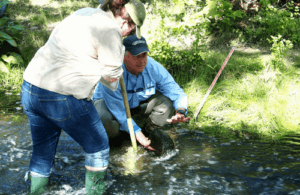

San Diego Coastkeeper has been monitoring local waterways since 2000. We assess watershed health on a monthly basis by measuring nutrients, bacteria, and basic water chemistry (temperature, pH, dissolved oxygen, etc). We monitor fixed sites in nine of San Diego County’s eleven coastal draining watersheds and use our data to assign water quality scores to each of our sites and annual watershed health reports. Most importantly (perhaps) is that we share these scores with the public by updating water quality information monthly on our website.
San Diego Coastkeeper is the only countywide, routine water quality monitoring program in San Diego, and we’re the largest volunteer-led effort of its kind in the state. We train over 100 volunteers each year to collect water quality data, and by analyzing the data that volunteers collect, we identify polluted waters and reduce sources of pollution.
We’ve learned a thing or two after 16 years of monitoring San Diego County’s water quality. These are our top five lessons learned.
- Urbanization is linked to poor water quality.
Want an example? See how fertilizers alone hurt our water. - Nitrates are especially high in Escondido Creek.
At high levels, nitrates can be toxic to animals and humans. The best way you can prevent nitrate pollution in our waters is to limit the use of chemical fertilizers in your yard, or better yet rip up your grass and plant native plants that don’t need fertilizers. - Bacteria levels are really high after a rain event.
Here are ten tactics to keep bacteria out of our waters by preventing polluted runoff. - Drought affects water quality, not just quality.
Ambient measurements help us determine when poor water quality is harming the flora and fauna of our waters. - We could not do this without our extraordinary volunteers.
Each month, 40 – 45 San Diego residents volunteer their Saturday to collect field samples and process them in the lab. During 2014 alone, 194 volunteers gave a total of 1,888 hours.















